Marketing is not about marketing, it’s about sales.
This may not always be the case for more significant enterprise deals with companies post-PMF, but the spirit of the insight remains unquestionable: selling matters.
Doing, figuring out what people buy, and building the product with that in mind (plus a beta version of the brand that works) beats expensive and expansive branding projects, especially before you even know if the market wants your product.
Marketing is not just about creating a memorable brand but also a risk-averse, profitable one.
After all, not all of us have the budget or the confidence of Jaguar to create a new memory imprint that disrupts legacy for the search for new buyers.
But let’s go back to B2B.
According to HockeyStack, it takes 266 touchpoints and 2.879 impressions to close a deal in 2024. This topic was hot, and tons of opposing views got people talking about the report from all angles.
Whether the data makes sense is irrelevant to this entry, but beyond the data it shows that marketers are under tremendous pressure to connect their actions to their results.
It kind of seems like we're the ones in charge of sales.
Shocking.
If you were traditionally a more brand-oriented marketer, now that you had fewer dollars, you probably had to justify your investments and show tangible revenue results beyond brand awareness or A+ copy. If you were a performance-oriented marketer, you had to find better ways to fine-tune your work, possibly exploring better creative and copy than you usually did.
In a way, both types of marketers had to explore each other's realms, recognizing the importance of "brand" and "performance" efforts (not one or the other).
The tension between performance vs. brand didn't matter half as much as actually being able to sell the product. Embracing brand with a b, not with a B, and focusing on tactical, marketing-driven initiatives directly impacting how prospects and customers view the company became the way forward.
Beyond the upper-lower case distinction, however, there is an important problem to consider when we think about brand and performance in B2B: Halfassing your creative or copy will no longer work (marketing got harder), and ignoring that you have to make money, not just awareness won't serve you either (Sales ➡ brand, not the other way around).
You must prove your marketing system works, and it translates to revenue.
So how can we do that? by being creative?
Almost.
Creativity Alone Won’t Save You
You know how you find the perfect copy, a beautiful creative, perfect targeting and execution, and ultimately, you get nothing but crickets?
B2B marketing is hard. Unfortunately, we were spoiled (post-pandemic tech boom) to think that creating products that startups would sell and buy from other startups was the norm.
But bubbles are always meant to burst. Bull markets, as many of us painfully came to learn, don’t last forever.
We had envious budgets (we see you Monday), too many products, and often the luxury to pay bank for apps we barely touched and people with fuzzy roles.
Joining the right communities, running “the playbooks,” and generally operating according to the status quo became less effective over time.
Best practices became an exercise of diminishing returns.
We did more and accomplished less.
VCs hated it.
The consequence? Focusing all our creative energy on finding the next playbook that could save us.
As Obaid puts it, however, B2B marketers have a limited set of ideas that don’t necessarily solve the problem of increasing efficiency. We love talking about creativity, but actually creating new experiments is a rare skill when being a copycat “apparently” helps us solve the problem.
What are we doing as marketers to work better with fewer resources?
Is marketing creativity leading to an authentic marketing system the missing ingredient to win? is it marketing effectiveness that translates into sales?
Is it both?
The Brand + Performance Romance
The fragility of our identities as performance or brand marketers became evident to everyone paying attention in the space. Over-indexing in a single vision of marketing and its function became a harmful mentality that pushed us, in many cases with tons of pain and regret, to accept that we need both yin and yang to create a whole functional process.
Silos became the genuine enemy.
Marketers had to accept that creating a product people want to buy matters as much as making a brand experience they can measure.
Econometrics became a trend, reconciling marketing’s impact on sales today and measuring its contribution to future sales in a less biased way (last-touch).
As with most cultural changes, many marketing professionals found a way to achieve their goals, but they paid a heavy price.
For those obsessed with brand and meaning, it meant doubling down on short-term sales acceleration, and for those obsessed with performance and data, it meant developing a sense of taste.
While these seem like superficial observations, there are genuine implications you probably had to endure personally.
As a brand marketer, you probably had to let go of a couple of designers to hire a paid specialist (or learn performance). As a performance marketer, you probably had to think of creative new experiments to meet your goals (lean into creativity and brand or hire a creative role).
Whatever your journey was, you probably learned that neither performance nor brand would save you.
In fact, the one thing that saves B2B marketing is sales.
Or, to be more specific, paving the way for sales to actually be able to make a call a decision maker will gladly take.
In the end, you’re really working in sales. It may not suck as much as the constant rejection BDRs face, but it isn’t a “creative” job either.
This perception of marketing as a different entity from sales must change.
Need some proof? Everyone knows of Jaguar, but without sales, you gotta make bold moves.
The Sales Marketer
“As Gregor Samsa awoke one morning from uneasy dreams he found himself transformed in his bed into a gigantic insect.”
Franz Kafka, The Metamorphosis
I often joke that performance marketers are failed engineers and brand marketers are failed artists. But my joke has been conceptually wrong all along.
We're failed sales reps.
Not all of us, probably not you reading this post, but many marketers despise picking up the phone and calling to close a deal. Our worst experience probably was being an SDR or BDR and having to face rejection day in and day out.
Unfortunately, the pain of selling is precisely what we must endure to become better marketers.
Sure, we don't make the call or visit their offices, but we must undergo a metamorphosis and obsess over the entire process and the pain it takes to close an enterprise deal.
We have to learn that dealing with professionals requires being a professional rather than a creative superstar or a data nerd.
Focus on being a solid vendor first, then worry about marketing.
That may mean learning that the deal closes while playing golf, attending an F1 race, or at a concert. Plus, acknowledging that your fantastic brand doesn't matter if decision-makers don't find it helpful for their internal needs, even if your ads are beautiful and algorithmically clean.
It's time for marketers to learn to show up and ensure your tech product becomes the preferred choice to solve an organization's process. It is not just about being the go-to product for your key stakeholders but about learning to influence a complex web of opinions and bureaucratic decisions.
That simple and that complex.
How? By running 0 to 1 marketing experiments that pay off with minimal risk (this is where your creative energy must go). Once your experiments work and you find the real product-market fit, you'll see how fun and creative B2B marketing can be.
But, most importantly, as marketers we must learn to think beyond our marketing bubble and focus on showing up and doing the hard things first. That generally isn’t building the perfect attribution model, or a rebrand, but rather, convincing others to pay for your product.
Whether you are performance or brand marketer matters a lot less than helping your team close sales and do whatever it takes (brand + performance) to close bigger deals faster.
You’re the future sales of your company.
It is time to let go of our inner identity struggles as X or Y marketers, or as playbook A vs. playbook B fans. It’s time to adapt, and become relentless and professional about winning.
It’s a 0 to 1 game. Sold vs. not sold. And that, is also on your shoulders as a sales marketer.
Creativity alone won't save B2B marketing, but being creative about selling and showing up by doing the repetitive 0-1 experiments, will.
You’re neither a brand or performance marketer.
You’re a salesman. Act accordingly.




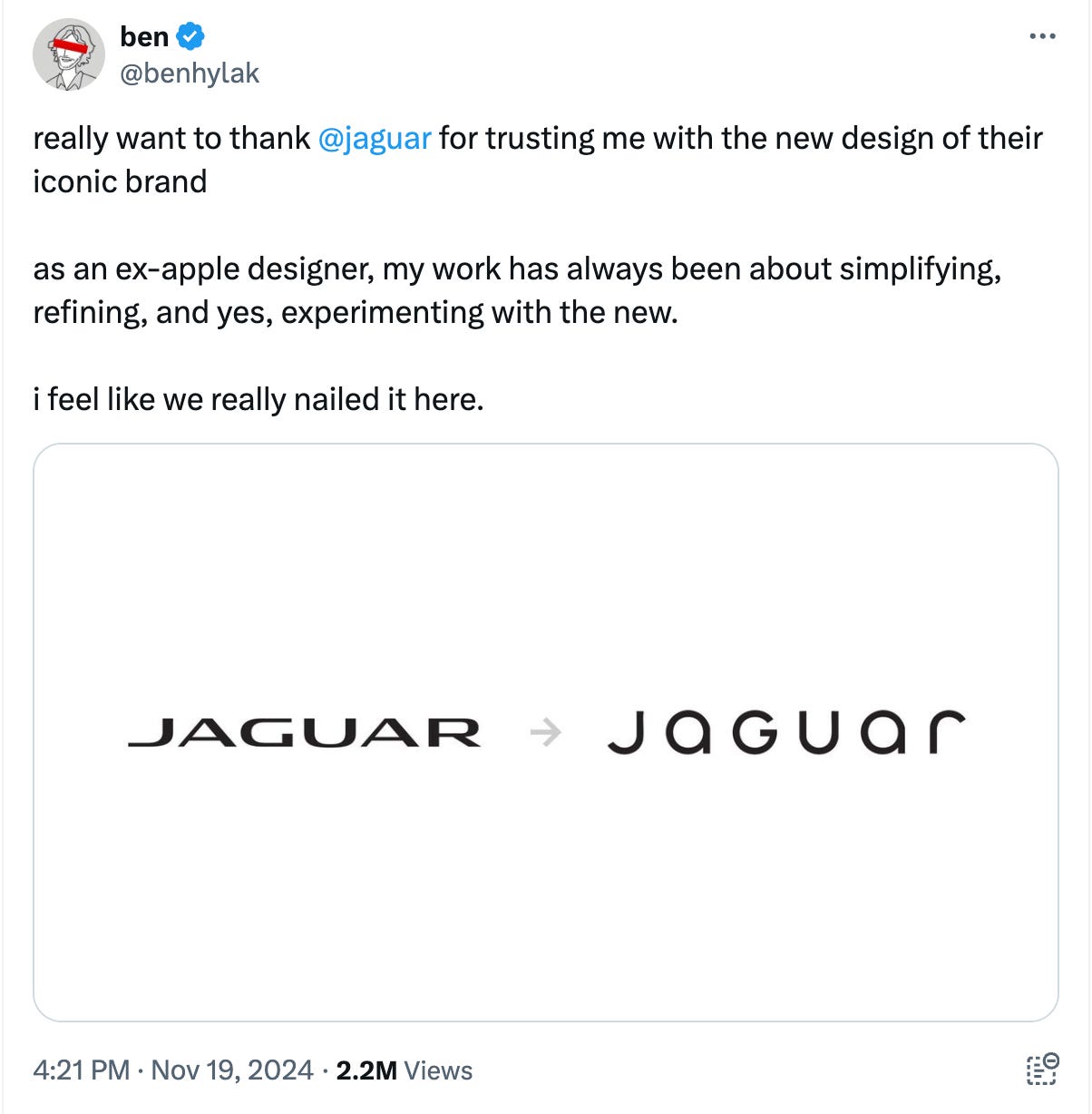
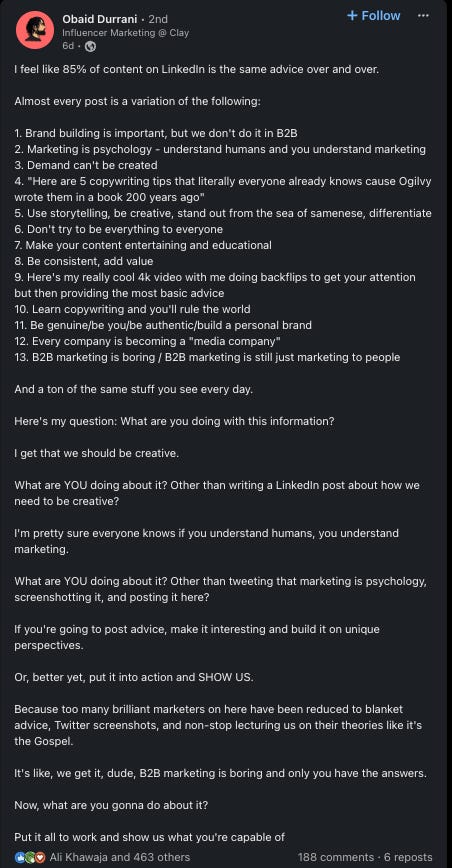
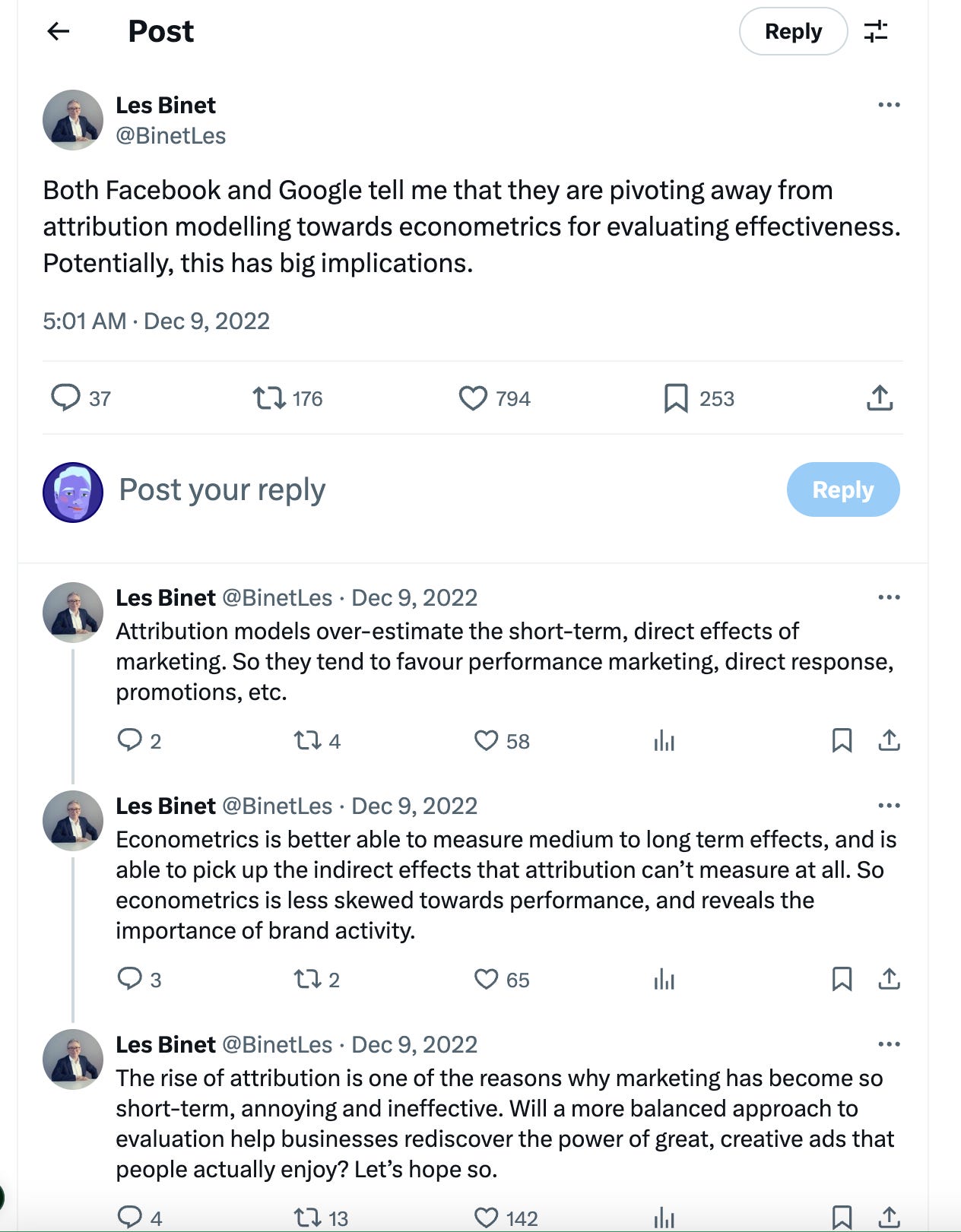
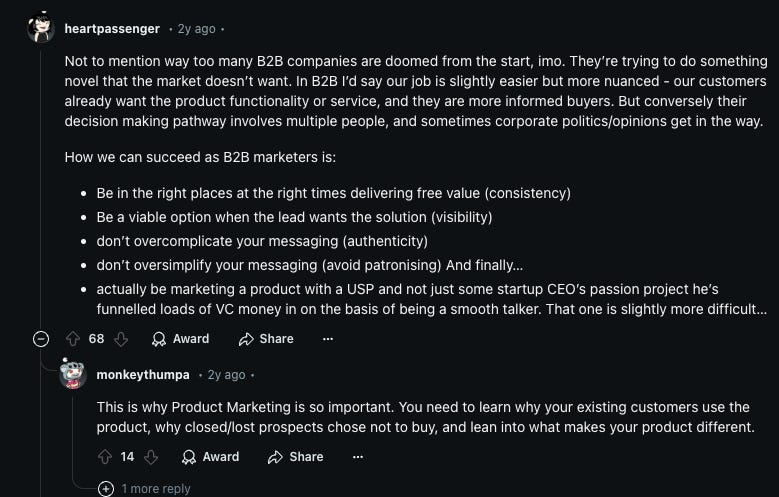
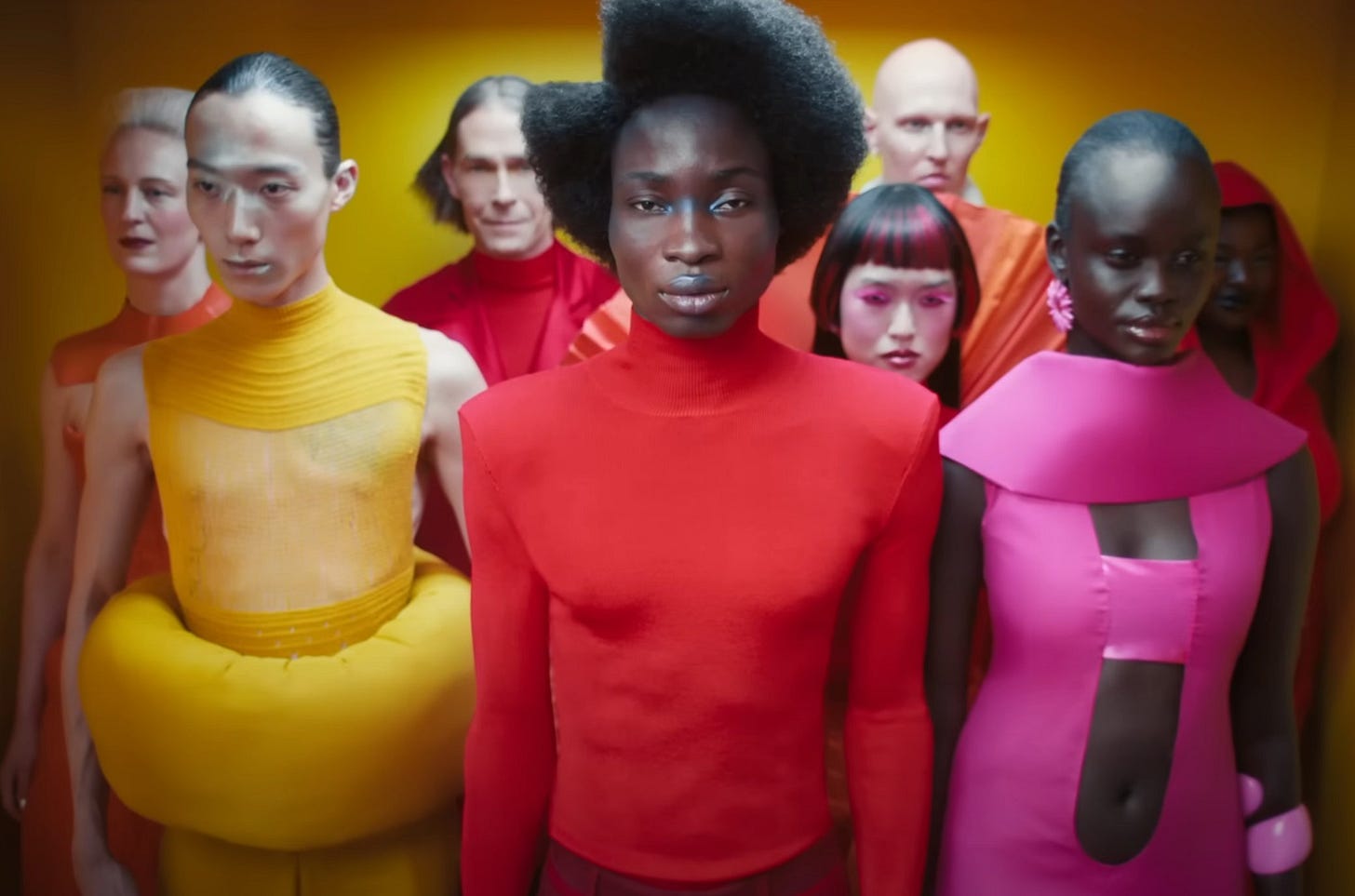

This was a brilliant read. I’d just add that in smaller teams especially, marketers who understand the sales process deeply often become the MVPs.
The blend is not optional anymore — it’s the new normal.